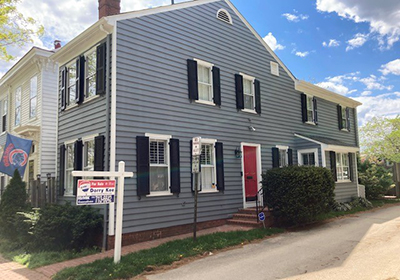
Housing Market Roundup Oct. 6, 2022

Here’s a summary of recent housing/economic reports that have come across the MBA NewsLink desk:
ATTOM: October Best Month for Homebuyers
ATTOM, Irvine, Calif., released its annual analysis of the best time of the year to buy a home, showing October, as well as the winter months, offer homebuyers the best deals – fetching lower premiums than other months of the year.
According to the analysis, buyers who close in October will get the best deal compared to the spring buying season. While the premium is still above market value, homebuyers are only dealing with a 3.3% premium, as opposed to the month of May, when homebuyers are experiencing an 10.5% premium. This analysis of more than 39 million single family home and condo sales over the past nine years is evidence of the continuation of a hot sellers’ market (see full methodology below).
“Apparently the old adage ‘Spring forward and fall back’ applies not only to setting your clocks, but to home prices as well,” said Rick Sharga, executive vice president of market intelligence with ATTOM. “Seasonality has always had an impact on home prices, which tend to weaken in the Fall and Winter months when there’s less buying activity. Savvy homebuyers can take advantage of those lower prices and less competition from other buyers once the leaves start to turn.”
Nationally, the best day to buy fall on November 28 with the lowest premium of 1.1% for homebuyers, followed by January 9 seeing a 1.3% premium.
According to the study, the states realizing the biggest discounts below full market value were New Jersey (-3.9% in February); Maryland (-3.5% in January); Michigan (-3.3% in October); Illinois (-2.7% in October); and Connecticut (-2.4% in December).
Wells Fargo Economics: Higher Mortgage Rates Could Restore Balance to Housing Market
Wells Fargo Economics, Charlotte, N.C., said elevated mortgage rates and rising unemployment to lead to further pull back in housing activity in the near term.
“Underlying buyer demand appears strong, especially among the large cohort of younger buyers,” said Economist Charlie Dougherty. “This cohort, however, is also more sensitive to changes in mortgage rates and is at higher risk of job losses during a recession. The supply side looks just as daunting. The vast majority of homeowners hold a mortgage with a rate under 5%. Mortgage rates remaining over that level for the foreseeable future takes away much of the incentive for sellers to put their homes on the market.”
Dougherty said an increase in unemployment is likely to bring about more selling, which should boost inventory levels. “However, sellers that are forced into that position might instead choose to rent their homes,” he said.
Redfin: High Mortgage Rates Mean Smaller Homes For Many Buyers
Redfin, Seattle, said a San Diego homebuyer with a $3,000 monthly budget can afford a 931-square-foot home at today’s 6.7% mortgage rates, down from the 1,366-square-foot home the same buyer could have purchased a year ago, when rates were sitting near record lows at 3%.
That 435-square-foot difference in San Diego is the biggest of the 50 most populous U.S. metros for buyers with a $3,000 monthly budget. But the sharp increase in mortgage rates to their highest level in 15 years is cutting into homebuyer budgets across the country. High rates are making monthly housing payments significantly more expensive, especially because home-sale prices in most areas are still higher than they were a year ago.
“Soaring mortgage rates are throwing a wrench into prospective buyers’ plans,” said Redfin Senior Economist Sheharyar Bokhari. “Many would-be buyers are dropping out of the market because they can no longer afford the home they want, resulting in a dramatic dip in home sales. For buyers who need a home right now–and can still afford it–compromise is the name of the game. Some buyers will choose to sacrifice on location or move further away from the city center so they can get the space they want, while others will settle on a smaller home in their ideal location.”
After San Diego, Newark, N.J. has seen the biggest decline in the size of home buyers can afford. A Newark buyer on a $3,000 monthly budget can afford a 1,726-square-foot home today, down from 2,156 square feet a year ago. Nassau County, N.Y. (1,300 square feet, down from 1,712), Denver (1,571, down from 1,933) and Portland, Ore. (1,504, down from 1,800) round out the top five.
